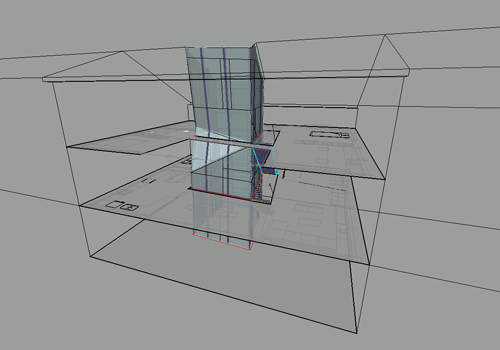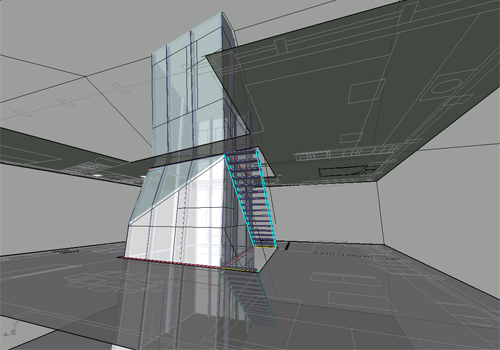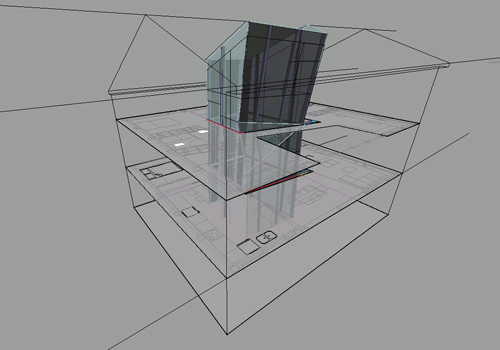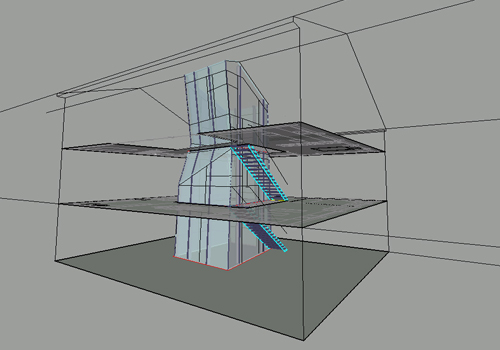



| AYLLÓN, SPAIN | ||
| By MEROestudio (Paula Montoya & Iñigo Redondo) with Javier García López Collaborators: Andrés Infantes., GV408, Reyes León. | ||
| Client:PRIVATE COMISSION | ||
| Budget: 550.000€ Size: 300m2 | ||
Se trata de la rehabilitación integral de una vivienda en el caso antiguo de la población sujeta a un estricto planeamiento urbanístico, que obliga a respetar el volumen de la envolvente y la sillería de su fachada. La propuesta se concentra en el desarrollo de su potencial interior, orbitando las circulaciones en torno a un patio que como un gran fanal de geometría quebrada, vertebra todo el espacio. La geometría del patio es truncada para garantizar la entrada de luz en todo en interior de la vivienda y adaptarse a la las distintas distribuciones en planta: El patio esta cerrado superiormente con un elemento practicable, para garantizar que ese espacio funcione como un regulador térmico de la casa; en invierno, acumulara calor gracias al efecto invernadero, transmitiéndolo a las estancias del perímetro, mientras que en verano, abriendo la ventana superior, funciona como efecto chimenea tirando hacia arriba del aire fresco del sotano y refrigerando en entorno del patio. Los paños de vidrio de las habitaciones son practicables hacia el patio para garantizar estos beneficios.Los materiales del proyecto combinan los tradicionales a utilizar en la fachada protegida y en cubierta y los materiales nuevos, utilizados tanto en el interior de la vivienda como en la fachada norte, de paneles ligeros de madera y resina. El jardín trasero se organiza para garantizar el acceso desde un callejón contiguo. |
The commission consisted in the complete re-construction of a historical house in the medieval centre of Ayllon in Segovia. The main façade is listed as a historical piece and needed to be restored and kept. Therefore, the proposal concentrates in exploring the inner space of the original volume by inserting an enclosed glass atrium. The house program is laid out around the transparent piece in the three floors of the dwelling. A light metal staircase runs parallel to the atrium whose geometry is an irregular box that adapts to the different areas of each level.. The atrium is closed at the top with opening windows. It operates as a climate regulator: in winter the upper glass remains closed keeping a green-house effect that heats up the inner part of the house; in summer time, the windows open, textile louvers are laid from one side to the opposite and the hot air ascends as in a chimney effect cooling down the house. The different rooms have windows to the atrium to enhance those benefits.The materials used in the project combine both traditional (of compulsory use in the original façade and the roofing tiles) and contemporary elements, used within the house and the north side where the enclosure is a ventilated façade of light Wood and resin panels. |
 |  |